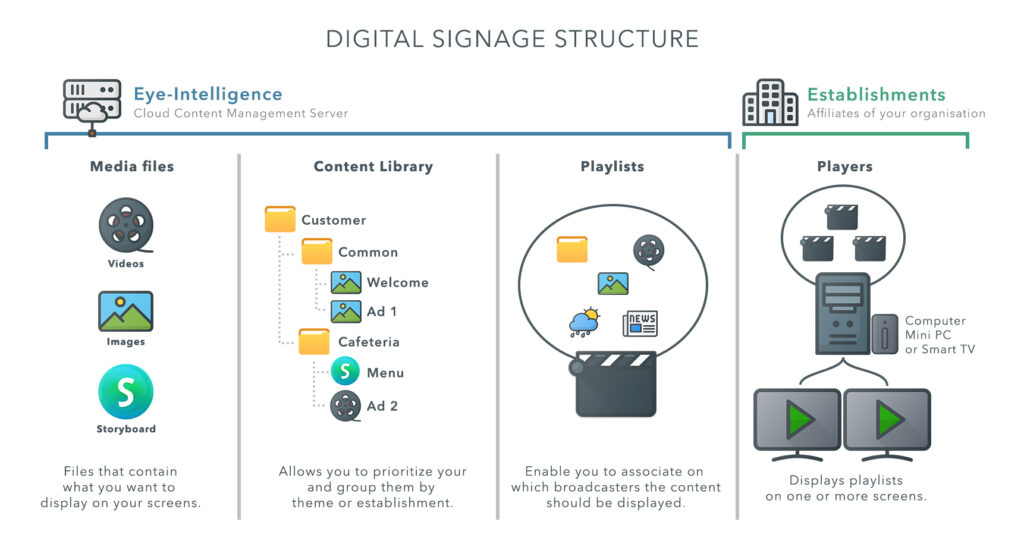Let’s start at the beginning: the purpose of digital signage is to display files on screens. Nothing complicated here.

Digital Signage Structure
Files: these are any multimedia content, most often images, videos and slideshows (Storyboard). It can also be dynamic widgets, personalized HTML5 page… The files have different parameters, such as display dates, frequency, duration…
The content library : consists of folders and files. The library groups all of your files into a hierarchy of folders and sub-folders, just like the Windows File Explorer (or Finder under MacOS). Folders not only make it easy to find content, but also to group it by category (eg: advertisements, for employees, for customers) or by location (eg: Building A, Entrance or Cafeteria).
Playlists: same principle as a music list, it is a list of files and folders to be played one after the other (or with random order of your choice). Playlists allow you to specify where different files should appear (on which screens).
Players: these are the computers that displays the content (it can also be a mini PC or a computer integrated into a Smart TV). Most of the time, One Player = One TV Screen. Each Player has one or multiple Playlists to know what to display.
This whole structure handles a wide variety of situations and the possibilities are pretty endless, but let’s simplify and detail together the situation that concerns most customers.
Most common situation
To save customers from having to manage all this, we simplify the infrastructure for them by associating a folder with a playlist which is itself associated with a player.
All of a sudden, everything becomes infinitely simpler! To add content to your Cafeteria screen, all you have to do now is add the file in question to the Cafeteria folder, and save to send your file to the Cafeteria screen! Couldn’t be simpler, right?